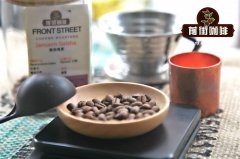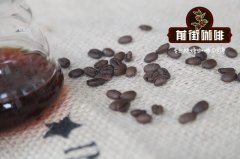Quick course on how to make coffee: how to make coffee by hand

Professional coffee knowledge exchange More coffee bean information Please pay attention to coffee workshop (Weixin Official Accounts cafe_style)
Ready to become a coffee expert? Hand brewed coffee is your first choice for advancement. From boutique coffee shops to Blue Bottle chain coffee shops, the whole world is doing hand brewing. It takes concentration, patience and mastery of each step to play all the fragrances of a bean from the simplest steps. Taste Master selects the steps to make a perfect cup of hand-brewed coffee, and diligently studies and practices to complete the five techniques of hand-brewed coffee in turn to help you become a coffee master.
warm cup
As with tea, temperature is critical to preserving the aroma of a cup of coffee. Before brewing coffee, it is necessary to wet the filter paper with hot water and warm the sharing pot at the same time. Wet the filter paper to remove the residual pulp smell of the filter paper itself, while the warm sharing pot is to ensure the temperature of the coffee to the greatest extent and avoid cooling and affecting the taste.
powder release
After warming the cup, put the ground coffee powder into the filter paper, and remember to tap the cup wall with your hand to arrange the coffee powder evenly and smoothly, which is conducive to the subsequent water injection. The thickness of ground beans will directly affect the taste of coffee. If the powder is too coarse, the water will pass quickly, resulting in incomplete extraction and insufficient aroma. If the powder is too fine, the water will not be filtered properly, resulting in excessive extraction and bitter taste of coffee. The best thickness of a coffee bean needs to be summarized in continuous brewing. At first, you can try it with white granulated sugar thickness.
Add hot water at about 93℃ to wet the coffee powder, so that the coffee powder fully awakens, the volume expands, and stops injecting water when water drops begin to fall on the filter paper. The amount of water is about twice that of coffee powder, that is, 15g of coffee powder is added to about 30ml of hot water. The expansion process releases carbon dioxide gas from the coffee powder, and only the powder ground from fresh coffee beans will have an expansion effect. The more bubbles, the closer the roasting time is. Otherwise, it will only leak a deep pit. Steaming is complete when the bubbles begin to contract, and the process takes between 30 and 60 seconds.
water injection
The process of water injection is different according to the genre, there are many kinds of sayings, there is a one-time completion of water injection to make coffee extract in place, there are also many times to make coffee in the early, middle and late stages of different extraction taste. But the constant is to use the water injection from the inside to the outside in a circular manner. The ratio of water to coffee powder is about 13:1 to 15:1. Note that the process of water injection can not let the water flow hit the filter paper wall, but also in the process of evenly wetting all coffee powder, is the most test of experience and technology in the five methods of hand coffee.
5 Ways to Make Coffee by Hand About Water Temperature
The best temperature of hand-brewed coffee is closely related to the depth of coffee beans roasting. Too high temperature and excessive extraction will bring out more bitter taste in coffee beans, while too low temperature will taste sour and lack aroma, so the best temperature needs to be tried constantly. Generally, lightly roasted coffee beans need to use a higher temperature to stimulate the aroma, 93℃-97℃ is more appropriate; while deeply roasted coffee beans need a slightly lower water temperature so that the aroma does not dissipate instantaneously, 85℃-88℃ is more appropriate.
Related recommendations: Katim coffee bean characteristics flavor introduction-Yunnan coffee origin in China
Important Notice :
前街咖啡 FrontStreet Coffee has moved to new addredd:
FrontStreet Coffee Address: 315,Donghua East Road,GuangZhou
Tel:020 38364473
- Prev

What are the five methods of making coffee by hand? which is the best?
Professional coffee knowledge exchange more coffee bean information please follow the coffee workshop (Wechat official account cafe_style) hand brewing methods are full of eyes, in the article we collect the five most common hand coffee brewing methods on the Internet and briefly analyze their taste and differences, hoping to give reference to friends who have just learned to hand brew coffee, but also give old players new creative excitement.
- Next

Costa Rican Coffee introduction Costa Rica Tarazhu tastes good
Exchange of professional baristas please pay attention to the coffee workshop (Wechat official account cafe_style) Costa Rican coffee: Costa Rica's high latitudes produce coffee beans in the world famous, rich, mild taste, but extremely sour, the coffee beans here are carefully processed, which is why there is high quality coffee. Tarasu is located in San Jose, the capital of Costa Rica.
Related
- Beginners will see the "Coffee pull flower" guide!
- What is the difference between ice blog purified milk and ordinary milk coffee?
- Why is the Philippines the largest producer of crops in Liberia?
- For coffee extraction, should the fine powder be retained?
- How does extracted espresso fill pressed powder? How much strength does it take to press the powder?
- How to make jasmine cold extract coffee? Is the jasmine + latte good?
- Will this little toy really make the coffee taste better? How does Lily Drip affect coffee extraction?
- Will the action of slapping the filter cup also affect coffee extraction?
- What's the difference between powder-to-water ratio and powder-to-liquid ratio?
- What is the Ethiopian local species? What does it have to do with Heirloom native species?

